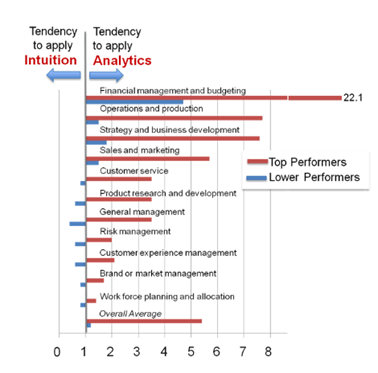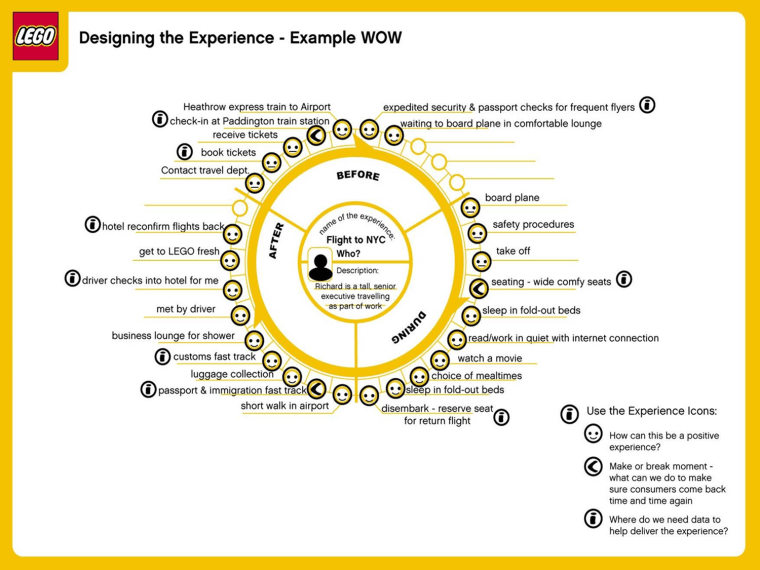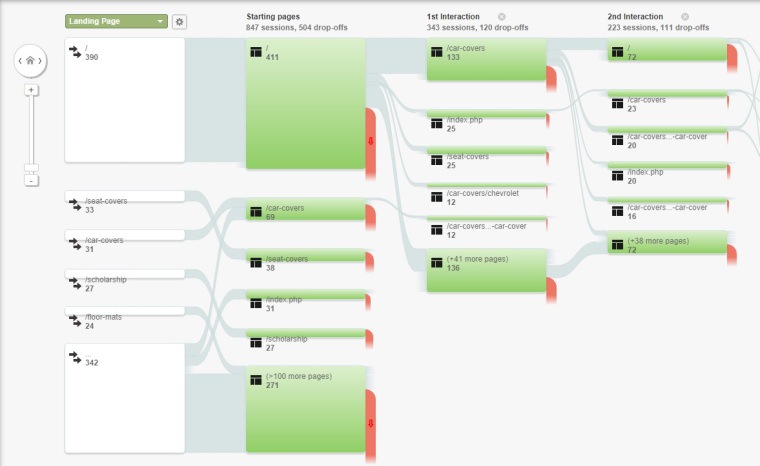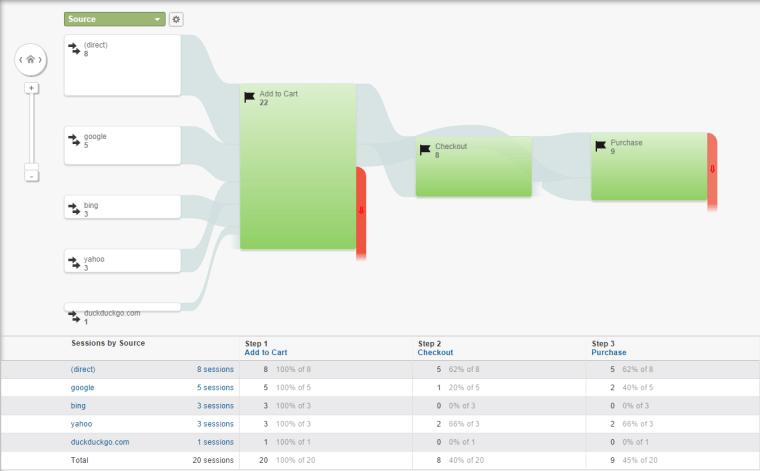How can you sway your customers to follow through with conversions and transactions?
You may be expecting an answer something along the lines of, “Change your social media button color to red and hopefully, the customer will follow you.”
However, the answer is to understand what your customers’ want, need, and how to make those wants and needs easily accessible on your website.
Customer Personas are Efficient, but Can’t Measure Up to Customer Journey Maps
Have you developed customer personas in the past?
If so, you’re headed in the right direction. Developing and applying a customer persona has proven to be beneficial for many companies. For example, Jet Blue’s buyer persona is described as a “low-budget traveler that wants a comfortable yet affordable solution to flying.” Their persona also uses social media and expects quick replies when they reach out to Jet Blue on Twitter and Facebook. As a result, Jet Blue delivers personal, fast responses, just like their persona wants.
Getting to know your customers is essential, but don’t stop there! In order to make your customers’ goals attainable, you need to figure out what they are.
By mapping out your customers’ routes from beginning to end, you’ll learn how (and if) they are finding what they are looking for, along with what they clicked on to get there.
Successful companies, such as Amazon, use data to ensure customers have a good experience both on and off their website. While data is often used in the marketing and production stages, Amazon chose to step up their game by using it to improve their customer interactions.
 Image credit: SAS. Used under license.
Image credit: SAS. Used under license.Data is Your Friend, Not Foe!
Companies have succeeded in the past by relying on their experience to envision their customers’ needs, so why should you start using data?
According to the MIT Sloan Management Review, “Top-performing organizations use analytics five times more than lower performers.”
 Image credit: business2community.com
Image credit: business2community.comIntuition may have worked well in the past, but now that you have the option of knowing what your customers really want, take advantage of the information.
Gartner reveals,
“Through 2015, more than 85 percent of Fortune 500 organizations will fail to effectively exploit big data for competitive advantage.”
By using data effectively, your company will jump ahead of the competition. 85 percent of Fortune 500 organizations may be using data…but aren’t using it effectively because they don’t know how.
With a developed, full understanding of data and how it works, your company will have an advantage over those Fortune 500 organizations.
Nestle is one Fortune 500 company that uses data effectively to their advantage. Nestle invested in a Digital Acceleration Team to monitor social media and engage with their customers. The team uses Salesforce (big data) to keep track of the conversations surrounding their brands and products in order to scope out trends. By scoping out the trends and discovering what their customers are looking for, they can essentially meet those needs by improving a product or even creating one.
You’ve Decided to Befriend Data, Now What?
Now you understand the advantages of using data, how do you get started?
Start by organizing the data so you can put it to good use. The data will provide you with all the answers you need to not only improve your business, but your website as well.
This is where you take the important steps to enhance your customer’s journey.
Customer Journey Map: The Basics
In a few words, a customer journey map is an illustration of how your customers interact with your company. The customer journey map is essential for discovering what your customers are looking for, what they’re not finding, and how you can fix that.
The main goal of a customer journey map is not only to get to know your customers on a human level, but to understand what they’re feeling and experiencing when they’re visiting your website.
Design and Content are Bound to be Different
The design and content of customer journey maps aren’t always similar. There are so many options when creating a customer journey map, so it is unlikely the two will be identical.
Doctor Disruption developed an example of an innovative customer journey map. In the Lego customer journey map below, there is a key in the bottom right corner defining the emotions marked across the map.
The map divided the experiences into before, during, and after categories to keep them separated. The actual customer experiences are detailed and organized to best explain the customers’ feelings.
 Image credit: experiencematters.wordpress.com
Image credit: experiencematters.wordpress.comCustomizing Your Customer Journey Map
Customer journey maps are used to understand experiences of all types. When I say “all types”, that can mean an in-person transaction, a phone call with customer service, or a website visit.
However, we’re going to focus primarily on using customer journey maps to improve and optimize your website.
While explaining the steps of creating a customer journey map, I’ll be using Custom Car Covers, a client of mine, as an example to increase your understanding of the subject.
To enhance your knowledge of customer journey maps even more, I recommend reading Customer Journey Maps: 10 Tips for Beginners. This article, written by Michael Hinshaw, the Managing Director of MCorp Consulting, offers many beneficial tips for beginners.
Step #1: Discover the Patterns
Discover the patterned routes your customers take on your website. After familiarizing yourself with your customer persona, you’ll get to know the trail your customers take and learn about their wants. Your customers’ journeys won’t always be the same, but patterns will give you an idea of the typical experience.
One of Custom Car Covers customer personas can be described as a wealthy, middle-aged male who enjoys showing off his fancy car(s) at car shows and buys various products to keep his vehicle looking top notch. This information gives a better idea of what customers might be looking for on their website.
Step #2: Connect the Customers’ Goals with the Proper Steps
This step is crucial when creating customer journey maps.
Since we learned many companies aren’t using data to its full advantage, we can also assume those companies aren’t making their customers’ goals a priority.
This is your chance to step ahead of the competition and dig deep. Figure out what your customers look for when they’re navigating your website, and take note of what’s lacking. Use this opportunity to enhance your customers’ experience.
Use customer service surveys, emails, and transcripts in order to understand your customers’ experiences.
Since Custom Car Covers is an e-commerce business, they have customer service representatives available from 8 a.m. – 5 p.m. to answer their customers’ questions. For this particular step, Custom Car Covers could email a short survey to any customers that reached out to them so they could learn about their experience.
Step #3: Locate the Touchpoints
A touchpoint is when your customer is connecting with your website and, using the data you’ve gathered, you can support their journey by giving them the tools they need to complete it.
Any time your customers reach a point where they have to take some form of action (decide whether or not to buy a product, interact with the company, etc.), that is considered to be a touchpoint.
Google Analytics has two different options to locate your customers’ touchpoints:
1. The Behavior Flow Report shows you “how traffic flows through a site”.
- The left hand column (Landing Page) shows you how your customer found your website. For example, if I were to search for a website selling black hats on Google, Google would be the landing page because it directed me to Amazon or Macy’s (Starting Pages).
- The column on the right side of Landing Page is called Starting Page. The Starting page is usually your website’s homepage, but that isn’t always the case. The Starting Page can be a product page, a blog post, etc. Essentially, the Starting Page was where your customer (metaphorically) took their first steps into your business.
- To the right of Starting Pages, you’ll see the 1st Interaction, where you’ll find customers moving towards (or away from) conversions, depending on how well your website caters to their wants and needs.
- Beneath Starting Pages, 1st and 2nd Interactions, you can view the number of customers who took those steps and also when they stopped. This is where you’ll find patterns with your customers’ experiences so you can move towards improving them.
As you can see, Custom Car Covers had a significant amount of customers “drop off” after arriving to a particular page. For some reason, customers aren’t finding what they’re looking for on that particular page and Custom Car Covers can now look into it.
 Screenshot taken 10/8/2014 of www.google.com/analytics.
Screenshot taken 10/8/2014 of www.google.com/analytics.The Goal Flow Report is similar to the Behavior Flow Report except it primarily focuses on your goals.
The Goal Flow Report was created to answer questions such as:
- Where do customers enter the pathway towards a conversion?
- Are the customers that entered from one website acting differently from the customers that entered through a different one? If so, are they continuing on the pathway towards conversion or shifting away?
- Are a lot of customers exiting the pathway to conversions during a certain step?
For example, customers who arrived on Custom Car Covers from Google, were more likely to make purchases than customers who arrived on Custom Car Covers from Bing.
 Screenshot taken 10/8/2014 of www.google.com/analytics.
Screenshot taken 10/8/2014 of www.google.com/analytics.Step #4: Touchpoints: Choose your Battles
This is where you’ll determine which touchpoints to improve first. The most cost-effective touchpoint should be modified first and then let the minors follow.
For example, if your customers leave your website during a check out because they don’t want to pay a hefty shipping fee, you might want to put that touchpoint towards the top of your list.
Since none of the Bing users ended up completing a purchase, Custom Car Covers might want to discover any difficulties Bing users might be having with their site and improve it.
Step #5: Embrace the Spreadsheet
Many people try to avoid spread sheets, but they’re very useful for organizing large amounts of information. Keeping all of the data you’ve collected in a spreadsheet will help you find the common occurrences (good or bad) during a customer’s journey.
The last step of developing a customer journey map for Custom Car Covers would be recording why Google users are much more likely to purchase something rather than Bing users. Keeping this information organized and ready will make the necessary changes easier and prevent repetition.
Big Company Uses Big Data to Improve Customer Service by 59%
If there’s a company to advocate for data, it has to be AT&T. According to the Wall Street Journal, AT&T increased the amount of data they use by 50,000% over the past six years.
After creating a tower-outage analyzer, AT&T was able to collect a huge amount of data that contained customers’ experiences during a cell tower failure. Once AT&T was notified of any bad customer experiences from tower failures, they were able to fix the problem quickly.
By using this innovative approach, AT&T’s customer experience has since improved by 59%.
Customer Journey Maps: The Beginning of Growth
Keeping the customers who visit your website on track towards conversions isn’t always possible. There will be a few who straggle, no matter how easy and persuasive you make the process.
With that said, taking the time to learn about your customers’ experiences, wants, and needs puts your business heading in the right direction. If you utilize customer journey maps, you’ll notice a growth not only in your customers, but also in your business.
Featured Image: Shutterstock




